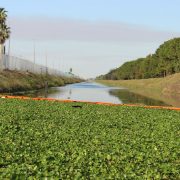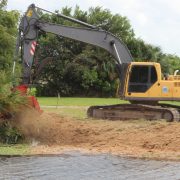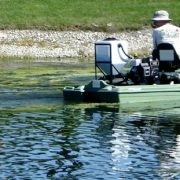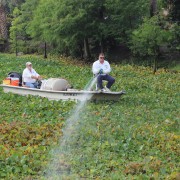Managing Vegetation Growth In Canals
With more than 500 miles of canals under its jurisdiction, the Lake Worth Drainage District is continually conducting maintenance operations of its waterways. Effective flood control is dependent on well-maintained canals. Personnel are in the field daily to ensure the system is operating efficiently and the water is free flowing.
One of these maintenance activities is the control of aquatic vegetative growth in the channel. To accomplish this task, LWDD utilizes two methods, herbicide application and mechanical. Given the proliferation of aquatic vegetation in South Florida’s tropical climate, it is necessary to use herbicide treatment to control growth. When applying herbicides, LWDD strictly adheres to the rules and regulations established by the U.S. Environmental Protection Agency and the Florida Department of Environmental Protection. Staff members applying chemical treatments are trained and certified annually on the proper application and handling of all herbicides used.
Mechanical removal includes the use of containment booms which are floating ribbon-
like structures that span the canal and extend approximately one foot both above and below the water’s surface. As water flows through a canal or winds blows across the water’s surface, floating debris will move through the canal network. The booms serve as a physical barrier, collecting the debris while allowing water to continue to flow unimpeded. District crews can then remove the captured debris mechanically with the use of a grapple truck. The use of these booms also reduces the use of herbicides by facilitating a more centralized and controlled location for application rather than treating entire reaches of canals.











